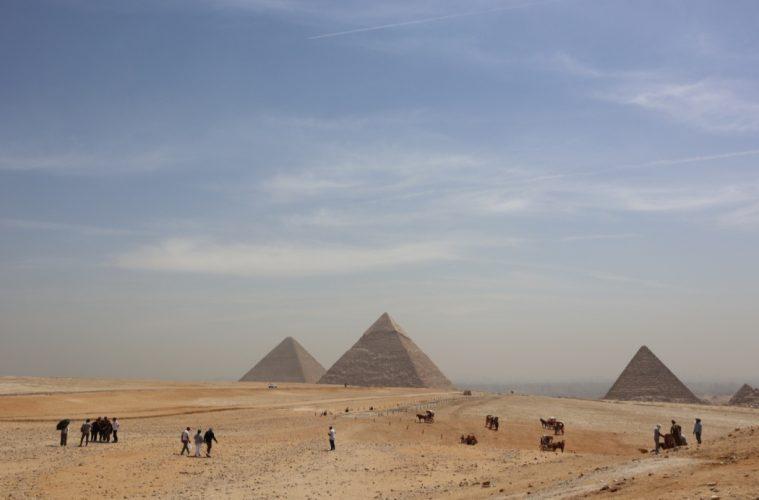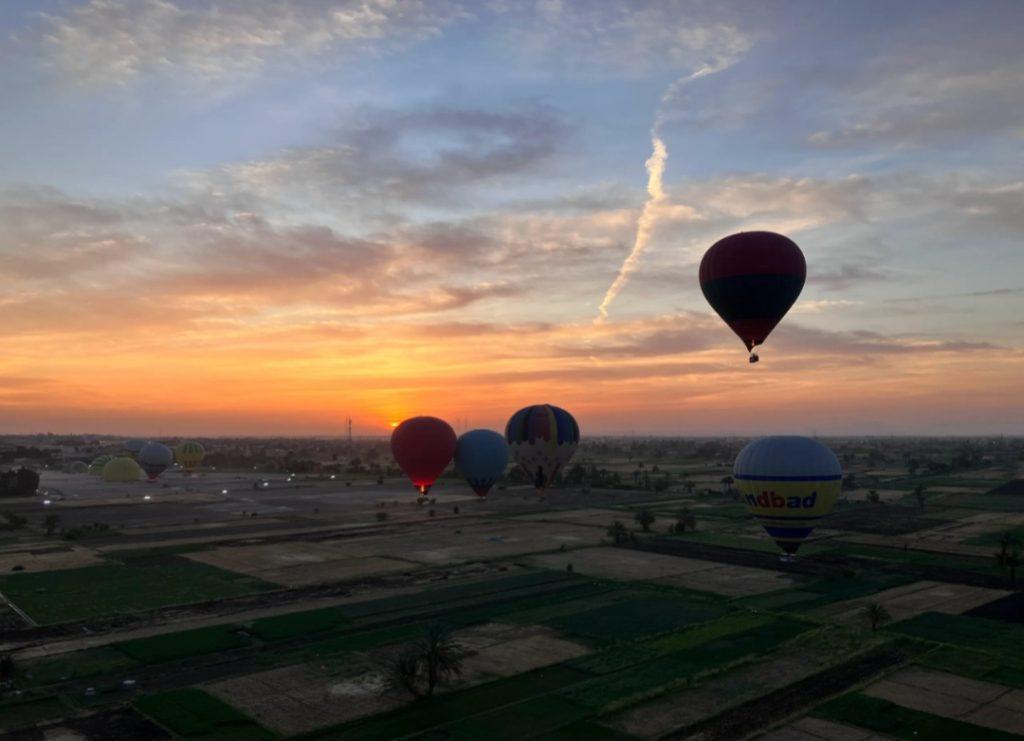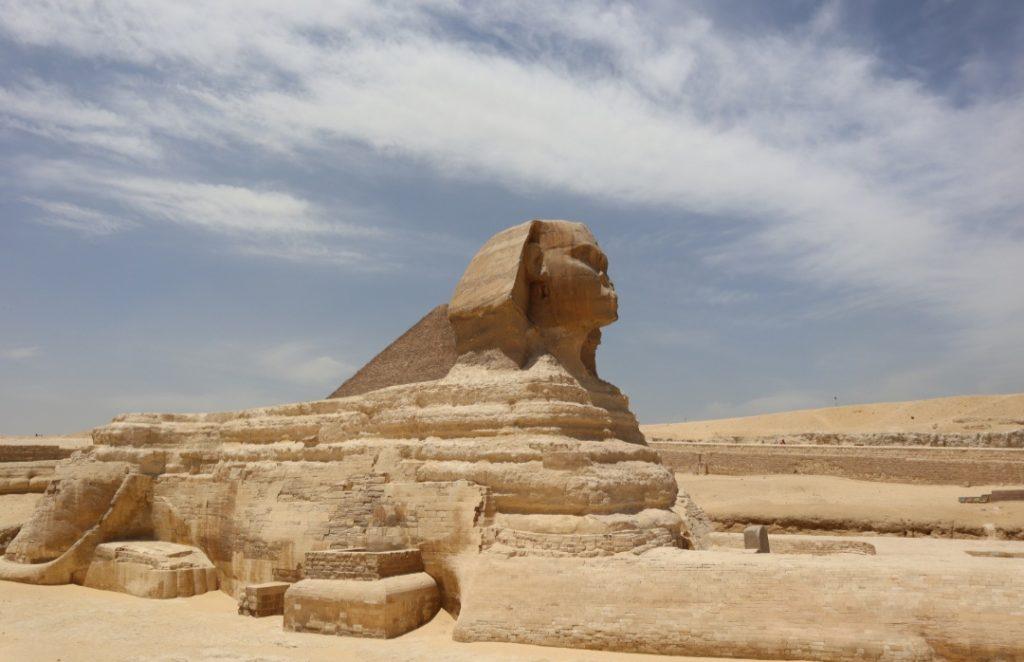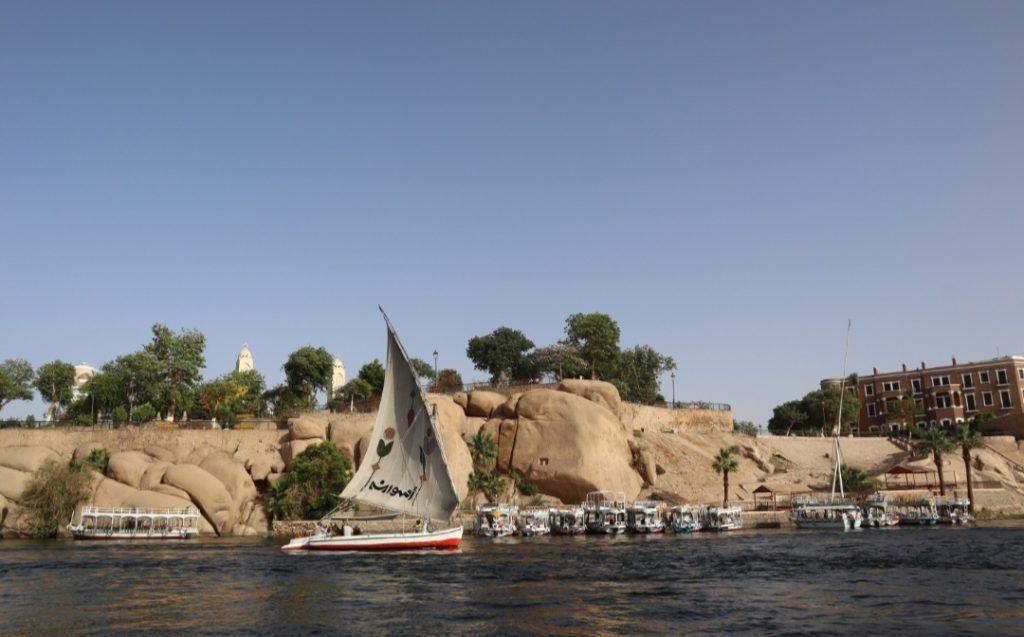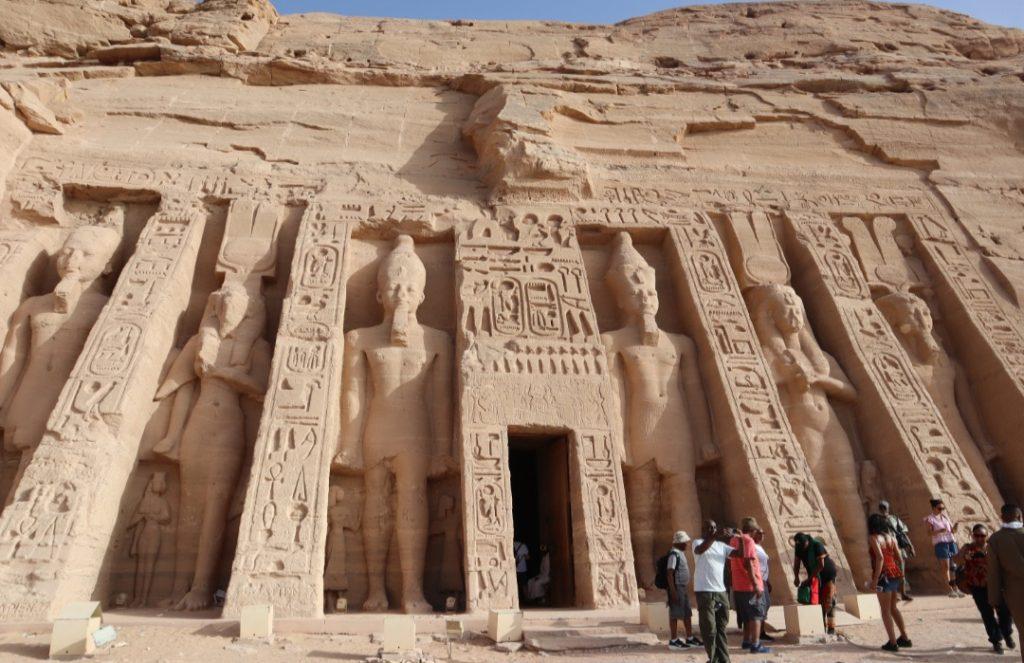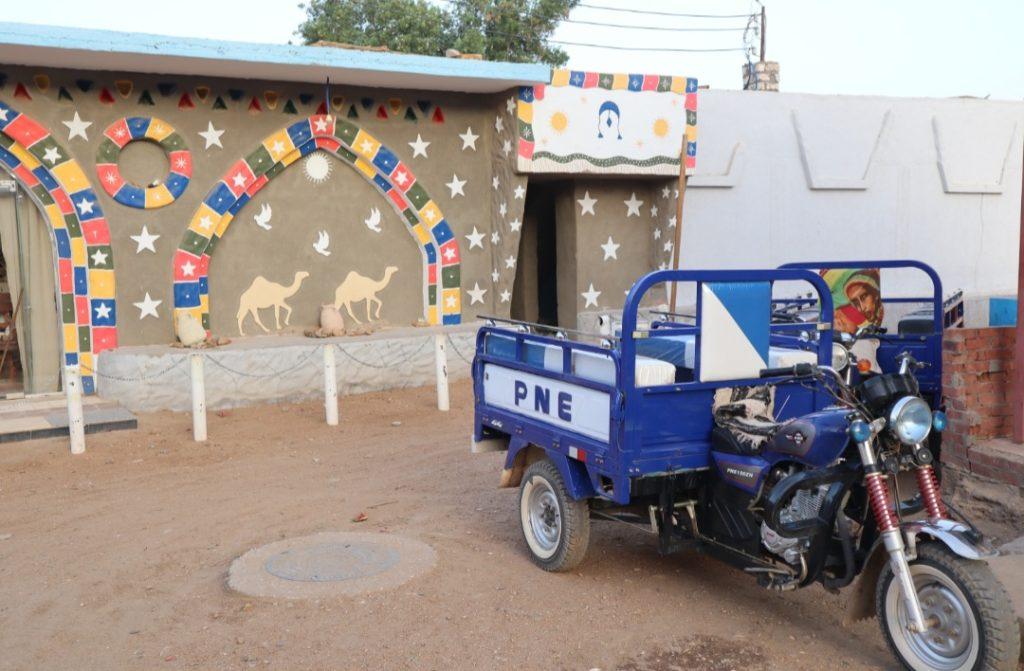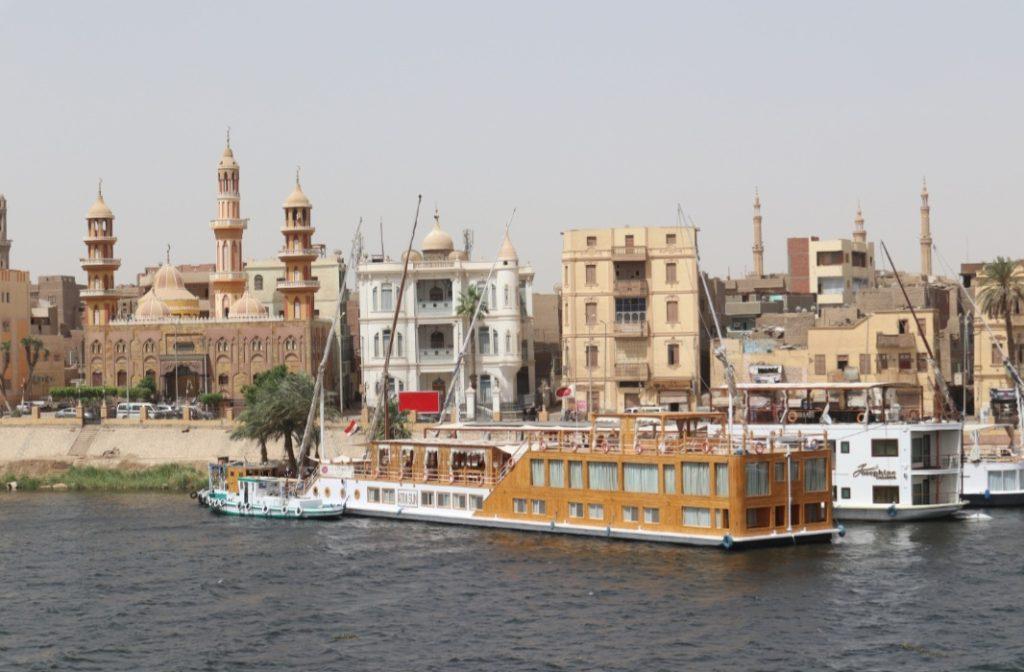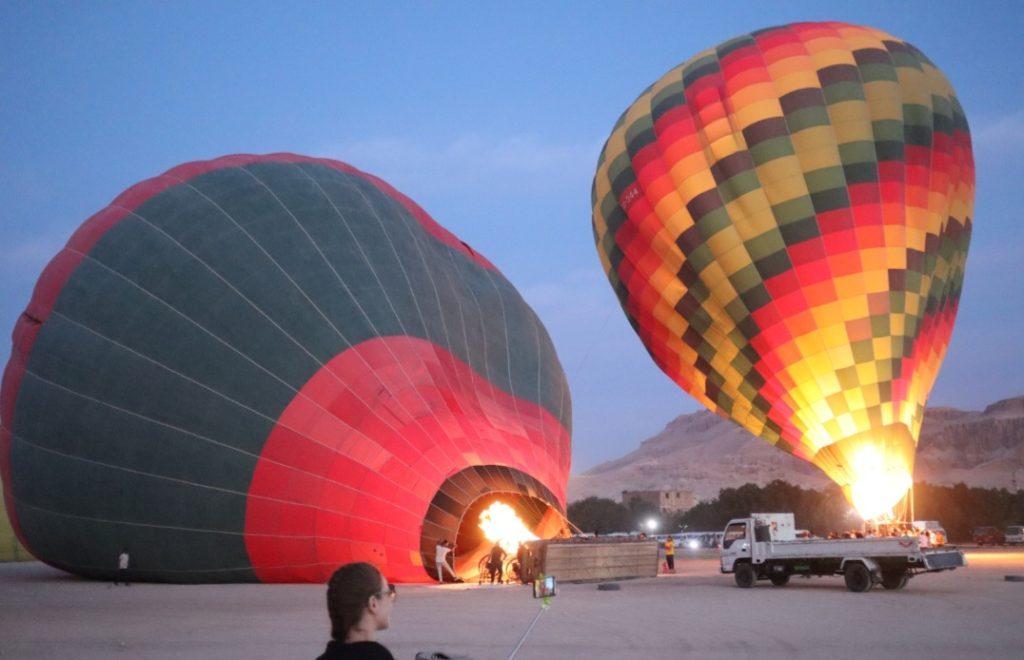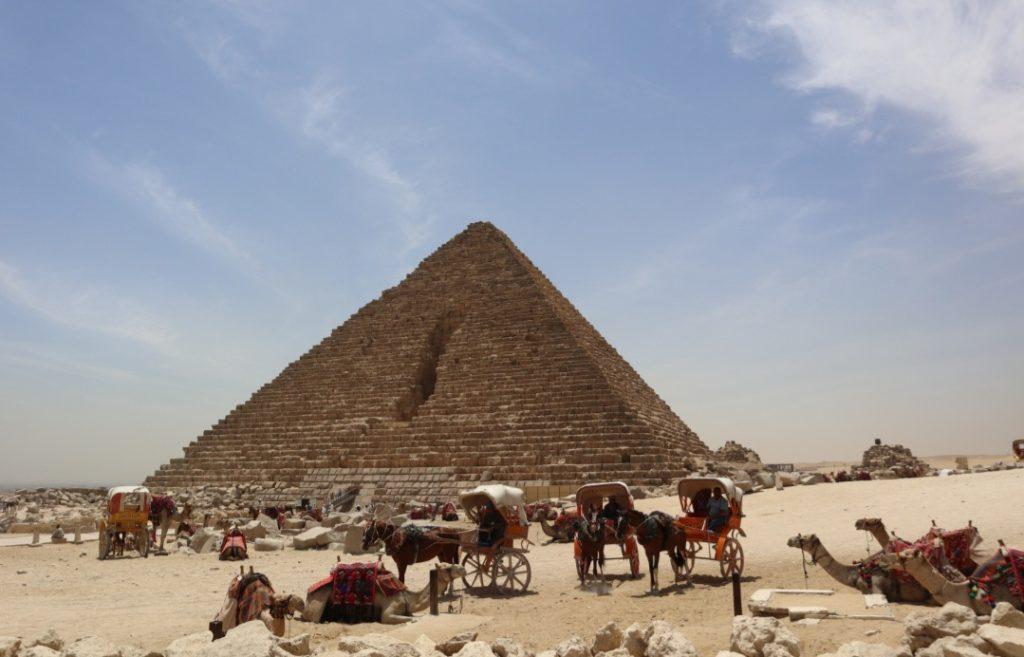“Yalla, Family, yalla,” said Medhat Youssef, not for the first time that morning.
It had been an early start and although this was only day two of our tour around the country, our Egyptologist-cum-chaperone’s words were already a familiar refrain. We followed him through the turnstiles, down the pier towards the weather-beaten boat. This while the early-morning sun beat down and hawkers held up necklaces and carvings, cotton tunics and trinkets to the accompaniment of plaintive pleas to buy.
“Maybe later?” chimed the merchants. “Special price for you!”
“Yalla, Family! Let’s go!” Medhat repeated patiently, bemused by the resilience of the Aswan salesmen for whom “No!” always meant “maybe”.
I was on the Egypt Nile Jewel tour with Expat Tours, a South African company that partners with on-the-ground operators known for their top-notch guides. Their bottom line is taking the grunt work out of travelling, making hassle-free and highly affordable exploration the focus – always with local experts leading the way. The only real hardships are several early wake-ups (vital for catching the monuments at their best, before the crowds rock up). The only danger, perhaps, is the threat of over-eating, but that’s on you.
As a guide, Medhat had the patience of a pharaoh waiting for his pyramid to be built. And as an Egyptologist he was no slouch with facts, and he was up to speed on the latest theories and intrigue to add colour to the intricate history and lively mythologies. We were never merely traipsing from one monument to the next, but instead getting caught up in Medhat’s personal love affair with an ancient and absorbing land that Egyptians call “umm al dunya” — “mother of the world”.
He called us “Family” just as he does with all his tour groups. Several of us on that tour were travelling solo, and yet it was impossible to feel alone – this was a joyously communal experience, albeit with sufficient time for quiet reflection, enough moments between monuments to let it all sink in.
Our boat that morning was bound for the Temple of Philae, built to the goddess Isis and set on a lake island where, glimmering in the sunlight, it greeted us like some ancient, dazzling rock star.
Once on the island, we gathered in the open-air colonnaded courtyard in front of the temple and listened as Medhat peeled back the layers of a complex soap opera involving Egyptian gods and goddesses. In this case it was the rollicking tale of Isis, her love for Osiris, and the surreal origins of their son, Horus, the falcon god.
Among the last pagan temples built in Egypt, construction on Philae began as recently as 690BC. But what’s truly astonishing is that, in the 1970s, the entire complex was moved. Cut into 150,000 pieces, a decade was spent transferring it from its now-submerged former location and it was meticulously rebuit on nearby Agilkia, the “island of the wolves”, to spare it from being flooded.
Not a stone seems out of place. Aside from the majestic proportions, there are the fascinating carvings, walls etched and painted with scenes from across the gamut of human experience: from pharaohs smiting enemies to images of domesticity, sex and childbirth. I had only to stare at an architectural detail or zoom in on a section of hieroglyphics, and I was transported across time.
Situated just outside Aswan, a city once considered the very edge of the Egyptian world, Philae was just one of many monuments that left me awestruck during this nine-day tour with Medhat and my surrogate “family”. The previous day, before flying to Aswan, we’d already been swept off our feet by the pyramids at Giza, and travelled farther back in time at the even more ancient step pyramid at Saqqara.
Up close and in person, these structures – so familiar from books and films – were a shock. The Indiana Jones aspect of seeing the pyramids I’d expected, but I did not anticipate my emotional reaction, that feeling of awe and disbelief at the reality of these ancient wonders with their sheer majesty, their height and girth and substantial weight. And also the texture of those two-tonne rocks – around 2.6 million of them to build one man’s tomb – smoothed and softened by the winds of time.
It’s not just one pyramid, either. At the Giza site, there are three main pyramids and smaller “mini me” pyramids, too. Plus, the Great Sphinx which is not just incredible to behold but surely also the world’s most popular photo backdrop.
Also at the pyramids, there are camel rides if you’re keen and you can purchase a ticket to go deep inside Khufu’s pharaonic burial chamber, where – for around 4,500 years – not a soul stirred.
The pyramids are at the edge of the Sahara, and yet were just down the road from our hotel, a literal oasis after a long, hot day, where we found respite by the pool and its bar.
Not that we had too much time to laze about. Soon after our visit to the Saqqara necropolis to see the step pyramid of Djoser, designed by Imhotep, history’s first recorded architect, we were on our way to the airport for the 90-minute flight to Aswan where, after our trip to Philae, a twilight felucca ride, a dip in the Nile, and a few hours carousing in the Nubian village of Gharb Soheil, we were back on our 50cabin cruise ship in time for dinner ahead of a very early trip to the jaw-dropping temple complex at Abu Simbel.
Located near the edge of Lake Nasser some four hours from Aswan, the Abu Simbel temples were – like Philae – cut into thousands of pieces, disassembled and moved to save them from being drowned during the construction of the Aswan High Dam in 1970. They were put back together so methodically that, twice a year, the sun still illuminates a figure of Ramses II and two of the gods in the inner sanctum of the Great Temple of Ra-Harakhte.
Nothing quite prepares you for the artistic splendour of this private temple built for a pharaoh who evidently wanted to make a lasting impression. He did so by constructing immense statues of himself across the kingdom, including the four built at the entrance of Abu Simbel’s main temple. And, nearby, there’s a second temple, built for Ramses II’s favourite wife, Queen Nefertari.
Despite all there was to see at Abu Simbel, we were back aboard our ship in time for lunch, which is also when we set sail for Luxor. Our ship, but “large boat” is perhaps more accurate. It was in fact perfectly proportioned and marvellously decked out for a royally good cruising experience, although I doubt even the pharaohs had such amenities nor the fine food at mealtimes, never mind afternoon tea laid out on the top deck, where there were also pools to cool off in and sun-loungers from which to take in the wondrous views as we sailed north, the sensation one of travelling across time.
The point of the cruise was as much to experience Egypt’s lifeblood river as it was a means of reaching key sights along the way. Fifty kilometres north of Aswan, we stopped at Kom Ombo, a unique “double” temple, half of which honours Sobek, the crocodile-headed god – and there’s a small museum of mummified crocodiles next door.
And then there was the other early start, at the end of our cruise, when the fortunate among us had signed up for a hot-air balloon ride above the city of Luxor, known in ancient times as Thebes. We had docked there the previous afternoon in time to tour both the 3,400-year-old Luxor Temple and the sprawling religious complex of Karnak, which are linked by a long avenue lined with battered sphinxes.
Flying above Luxor is truly one of life’s unparalleled experiences, a chance to witness the Nile and the Valley of the Kings illuminated by the golden light of dawn.
Once we’d landed and reconnected with Medhat, we proceeded to the Temple of Hatshepsut, yet another architectural stunner with Greek and Egyptian elements dating back to the 18th dynasty. Never mind the too-incredible-to-be-true true story of having being built by a brilliantly ambitious queen who lived as a pharaoh.
While Hatshepsut’s private temple is on side of a high hill, on the other side is the Valley of the Kings, a necropolis where Egyptian royals were laid to rest for 500 years. Many of the tombs are kept sealed to allay deterioration. Open to visitors, the famous tomb of King Tut is rather plain without his treasures, although his grisly, desiccated mummy remains a source of morbid fascination. By contrast, the nearby tomb of Seti I is bedecked with carvings and original pigments, much of it so vividly rendered and still so vibrant it might have been done just the other day.
From Luxor, our bus transported us east, through the biscuity desert towards the coast for a chance to explore the technicolour wonders that dwell below the surface of the Red Sea.
Two nights at a seaside resort in Hurghada proved a perfectly timed pause from the desert heat and the Nile’s rollicking history lessons. There was now the simple allure of relaxing by the sea, dipping into the warm water or hopping on a boat for a gentle scuba or snorkelling session. Near Hurghada, the Great Fringing Reef teems with colourful fish that dwell in the coral beds – from neon-hued parrotfish and bright-yellow butterflyfish to clownfish coyly hiding in anemones, there are also turtles and around 40 different shark species to see.
Our tour ended as it had begun: in Cairo, only now with a far clearer understanding of what makes this ancient place tick. As a reminder of all we’d seen, we spent a few hours in the vast 19th-century Egyptian Museum where we saw some of the golden artefacts of teen-king Tutankhamun which are displayed alongside over 170,000 other treasures, including mummies, scrolls and carvings of cats.
And then, assuming that we’d imbibed enough of his wisdom and street smarts, Medhat turned us loose on Old Cairo for a chance to explore souks selling every imaginable trinket – football shirts, shisha pipes, spice mixes, jewels, braziers, cooking pots, you name it. Daring myself to not get lost, I slipped down one alleyway and found myself in a place where, I guessed, gold was being traded, and when I turned around, there were crescent-moon minarets and domes rising above an antique mosque. Across the road a striped-stone façade formed the backdrop to such an array of activity I could not decide where to look.
All life was there in that moment, and then in the next, and the next. I was already aching for my return visit to Egypt. I cannot wait. When I do return, I hope it’s with someone like Medhat, whose enthusiasm for the country is contagious. For me, that was the best part of this journey: being guided by an expert who made a tour of Egypt’s highlights feel more like the start of a love affair with the mother of the world.


